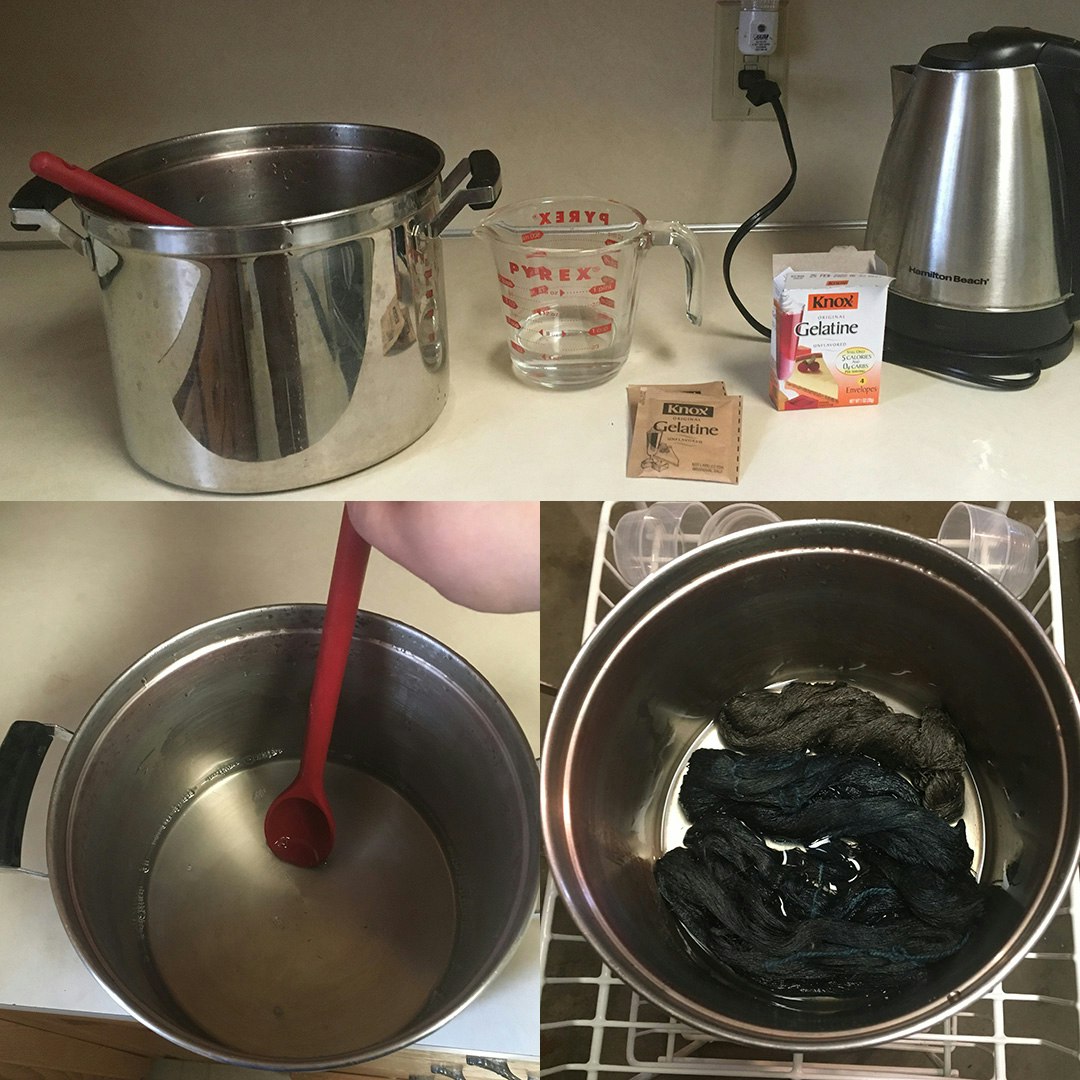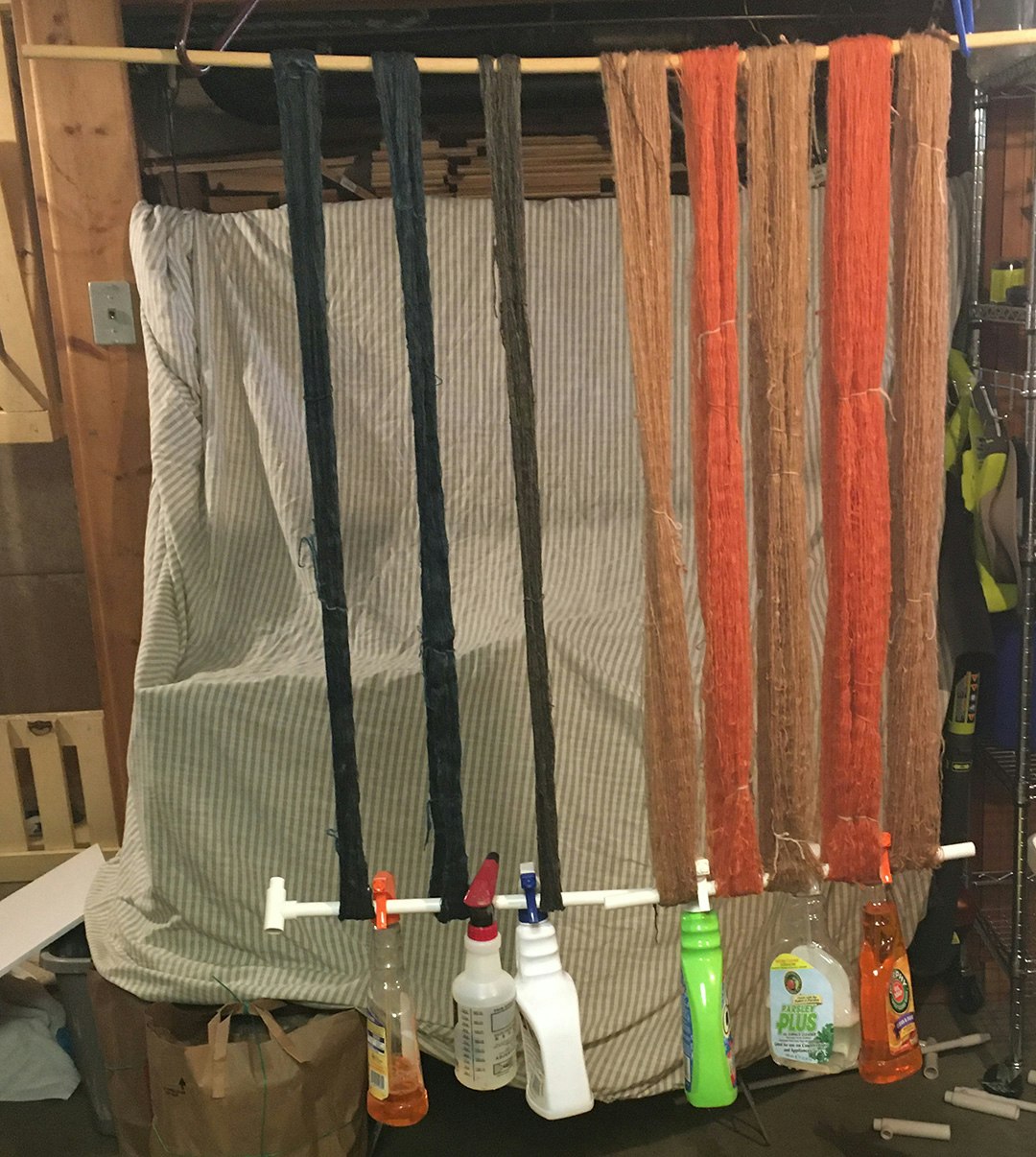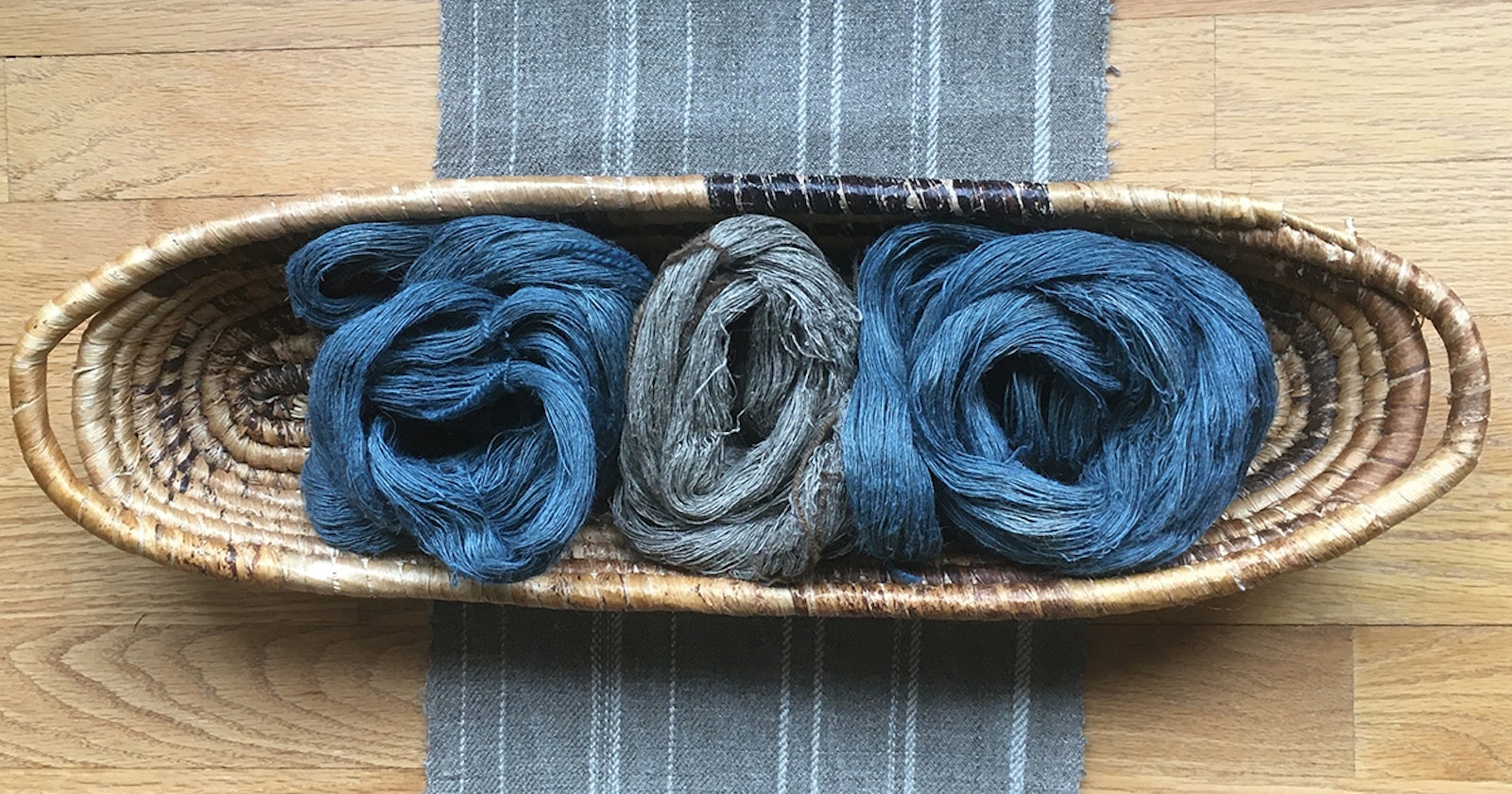Until mechanized spinning came about during the Industrial Revolution, all yarn was handspun, and all weavers used handspun yarn, often singles. While it is not as common these days, I love weaving with my handspun yarns. But weaving with handspun singles can be intimidating at first. For me, the key to being comfortable when I weave with handspun singles is sizing.
Why Sizing Matters
I started out by using bast fibers for my early weaving attempts with singles. They are strong and resilient fibers and make a strong singles yarn. I like insurance, though, so I have always sized my warp yarns. Sizing will not make a weak yarn stronger. But what it will do is prevent some of the fuzzing due to abrasion, which is inevitable in all yarns as they are being woven. This fuzzing can cause the warp threads to catch on each other and make broken warp ends more likely when changing sheds. It’s absolutely possible to weave with unsized, handspun singles, and many people do, but I prefer to weave with sized singles. Currently, I am spinning wool singles for weaving, and those, too, can benefit from sizing because no matter how smoothly spun, wool singles still have some hairiness, which could catch on neighboring warp yarns.

Devin’s recipe for sizing doesn’t make a large quantity, but it is enough to size 6 to 8 skeins of yarn.
How I Size Singles
The process of sizing singles yarn is easy. Once the yarn is spun, I skein it and wet finish it in a method appropriate to that fiber. I use a gelatin solution for sizing, as it’s easy to find and make, and it works well for me. I mix 2 packets of gelatin (they come 4 to a box) with half a cup of cold water and stir thoroughly. I then put the solution in a pot and add 2 cups of boiling water. I usually end up with about an inch or so of sizing in the bottom of the pot I use. Once it has cooled to lukewarm, I thoroughly wet the skeins of yarn with water, gently wring them out, and put them in the pot of sizing. I then knead the skeins of yarn, making sure that the sizing is evenly distributed. The liquid will not feel sticky when it is warm, but as it cools, it will.

It is important to hang the skeins with enough weight to pull them taut without stretching them.
Once all of my skeins are sized, I arrange them for drying. I do not have a yarn blocker, so I straighten out each skein between my hands and hang them to dry with weights. I do so by threading a dowel or rod through the skeins and suspending it from two clothes hangers, and then I place another dowel through the bottom of the skeins. I weight the bottom dowel with bottles or weights suspended from S-hooks to add tension. Once the skeins are hung, I arrange each one so that there are no twists or folds, and then during the drying period, I come by every couple of hours and rotate the skein a quarter to a half turn and separate the strands of yarn.
After the sized singles have dried, they can be stored until you are ready to wind a warp.
—Devin
Devin Helmen has been immersed in fiber since learning to spin at age 8. They spin, knit, and weave in beautiful Minnesota. Devin enjoys writing and teaching about fiber arts and has a passion for spindles and everyday textiles. They blog, intermittently, at www.afewgreenfigs.blogspot.com.

